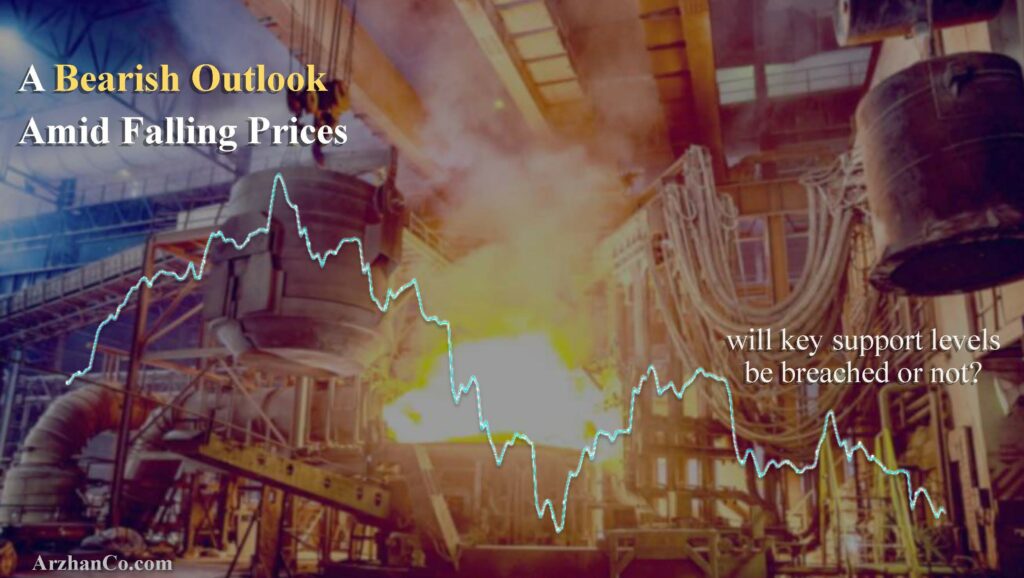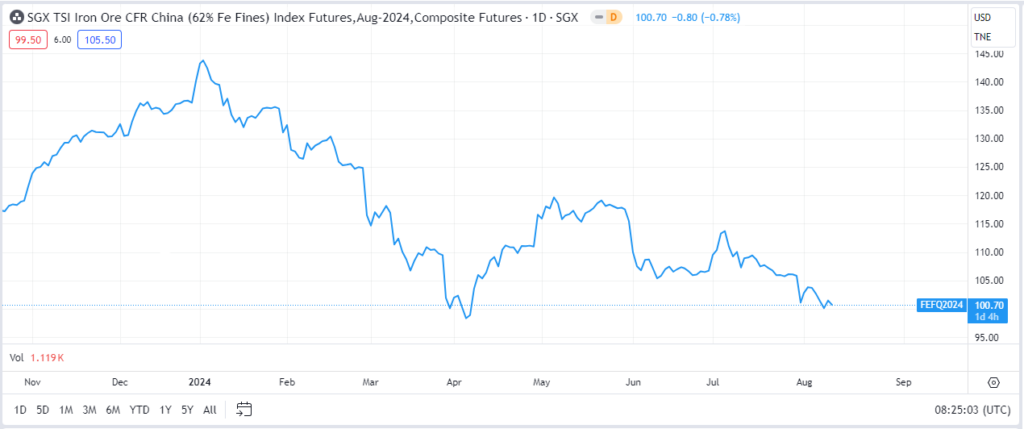Insight into China’s Steel Market and Price Trends

Insight into China’s Steel Market and Price Trends
Current Market Overview
China’s steel market is currently navigating a challenging environment characterized by falling steel product prices, stringent new standards for manufacturing steel rebar, and sluggish downstream demand. Market sentiment remains predominantly bearish, with steel mills grappling with shrinking profit margins. These issues are compounded by seasonal factors, such as high temperatures, which have further dampened demand.
Key Market Prices and Percentage Trends
- Steel Bar Cold-Finished 1-Inch Round 1018 (Carbon):
- As of July 19, 2024, the price was $69.5 per cwt, reflecting a 1.77% decline from June 2024, when the price stood at $70.75 per cwt.
- Steel Slab Export, FOB Brazil:
- On July 26, 2024, prices ranged between $520 – $530 per ton, marking a 2.78% decrease from June 2024, where prices were between $560 – $580 per ton.
- Steel Billet Domestic, Ex-Works Tangshan, Northern China:
- The price was 3,150 Yuan per ton on July 29, 2024, showing a 0.63% decrease from June 2024, when it was 3,374.74 Yuan per ton.
- Steel Hot-Rolled Coil Index, FOB Mill US Midwest:
- As of July 29, 2024, the price was $33.52 per cwt, down by 3.49% from June 2024, where the price averaged $35.69 per cwt.
- Iron Ore Prices:
- The price of iron ore has recently declined to $100.70 per ton, reaching its lowest point in four months. This drop suggests that the market has hit a temporary bottom, with prices revisiting their previous lows.
Market Patterns and Technical Analysis
A Head and Shoulders Pattern was observed around July, a classic technical indicator often signaling a trend reversal. The pattern has unfolded as anticipated, leading to a significant decline in iron ore prices to $100.70 per ton. This decline, reaching the market’s support level, suggests a potential continuation of downward pressure on prices, particularly if the support line is breached.
Near-Term Forecast for the Steel Market
Looking ahead, several factors are expected to shape the near-term outlook for China’s steel market:
- Production Adjustments: Chinese steel mills are increasingly implementing production cuts in response to low margins and compliance with new rebar standards. These cuts are likely to continue, resulting in reduced steel output in the near term.
- Raw Material Price Dynamics: The recent decrease in iron ore prices to $100.70 per ton is significant. However, the market appears vulnerable to further declines. Should the iron ore price break below this support level, a continuation of the downward trend is likely, exerting additional cost pressures on steelmakers.
- Global Economic Uncertainty: Trade tensions and anti-dumping investigations, such as Vietnam’s scrutiny of Chinese hot-rolled coil imports, are poised to create additional challenges for Chinese steel exports. These external pressures could further weaken the domestic steel market.
- Technical Indicators: The Head and Shoulders Pattern indicates that the market may face continued downward pressure, particularly if iron ore prices breach their current support level.
- Government Policy and Intervention: While potential government interventions could provide a safety net for the market, there is no certainty that such measures will materialize immediately.

Market trend of Iron ore – China
Market Forecast:
Given the current market conditions, the outlook for China’s steel market in the near term is cautiously pessimistic. If iron ore prices breach the critical support level of $100.00 per ton, further declines are expected, putting additional strain on steel producers. The market will likely remain under pressure, with prices potentially experiencing further downward movement. Market participants will likely focus on cost containment and maintaining production efficiency amid ongoing economic challenges. Any potential recovery will be contingent on improved domestic demand and favorable external economic factors.
